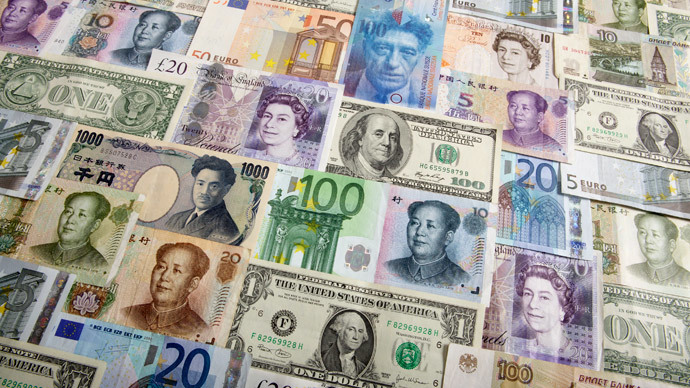Russia’s Biggest Bank Launches Financing in Chinese Yuan
ECONOMICS, 1 Dec 2014
Russia Today – TRANSCEND Media Service
Sberbank, Russia’s largest lender, will be the first bank in the country to start issuing credit guarantees denominated in Chinese yuan. The new yuan-based letters of credit ensure payments between buyers and sellers, with the bank acting as a router.
This will make payments for import contracts settled in yuan more seamless, the bank said in a statement Tuesday.
“An important aspect of these transactions is that post-import financing was attracted in Chinese yuan, which is especially relevant given the existing market environment,” the statement says. “Starting transitions in RMB will allow customers to not only meet current funding requirements and settlements, but also to continue active cooperation with Chinese suppliers.”
Letters of credit are considered secure and convenient in international trade, as they are designed to protect both buyers and suppliers, and offer a good alternative to advance payment. This can overall help expedite the entire payment and shipping processes.
“This is a complex transition in which the letters of credit in Chinese yuan (RMB) have been opened on behalf of one of our most major corporate clients,” the statement said.
The decision is part of an overall surge in Chinese issuance of letters of credit since 2012, as Chinese investors themselves are partial to using letters of credit in transactions.
“We recognize the positive trend of strengthening partnerships with Chinese banks, especially after the signing of several agreements at the APEC summit, held this November in Beijing. At the moment we are seeing a growing interests in Russian companies in local currency settlements, in particular the Chinese yuan, and of course, rubles,” Andrey Ivanov, director of trade finance and correspondence relations at Sberbank CIB, said, Vesti reported.
In October, Moscow’s and Beijing’s central banks signed a three-year ruble-yuan currency swap deal worth up to $25 billion, with the aim of boosting trade using national currencies and lessen dependence on the dollar and euro.
Russia turned to China, the world’s second largest economy – and largest by some economic indicators – after the US and EU imposed sanctions on Russia over the events in Ukraine earlier this year.
Overall trade between Russia and China increased by 3.4 percent in the first half of 2014, reaching $59.1 billion. The two neighbors expect annual trade to hit $200 billion by 2020. China is Russia’s second-biggest trading partner, after the EU.
READ MORE:
Putin, Xi Jinping sign mega gas deal on second gas supply route
Defying the dollar Russia & China agree currency swap worth over $20bn
DISCLAIMER: The statements, views and opinions expressed in pieces republished here are solely those of the authors and do not necessarily represent those of TMS. In accordance with title 17 U.S.C. section 107, this material is distributed without profit to those who have expressed a prior interest in receiving the included information for research and educational purposes. TMS has no affiliation whatsoever with the originator of this article nor is TMS endorsed or sponsored by the originator. “GO TO ORIGINAL” links are provided as a convenience to our readers and allow for verification of authenticity. However, as originating pages are often updated by their originating host sites, the versions posted may not match the versions our readers view when clicking the “GO TO ORIGINAL” links. This site contains copyrighted material the use of which has not always been specifically authorized by the copyright owner. We are making such material available in our efforts to advance understanding of environmental, political, human rights, economic, democracy, scientific, and social justice issues, etc. We believe this constitutes a ‘fair use’ of any such copyrighted material as provided for in section 107 of the US Copyright Law. In accordance with Title 17 U.S.C. Section 107, the material on this site is distributed without profit to those who have expressed a prior interest in receiving the included information for research and educational purposes. For more information go to: http://www.law.cornell.edu/uscode/17/107.shtml. If you wish to use copyrighted material from this site for purposes of your own that go beyond ‘fair use’, you must obtain permission from the copyright owner.
Read more
Click here to go to the current weekly digest or pick another article:
ECONOMICS:
- From Private Profit to Public Power: World’s Richest 1% Increased Wealth by $33.9 Trillion Since 2015
- Eradicating Poverty beyond Growth: Reforming the Global Financial Architecture for Ecological and Social Justice
- Two Hundred Years Ago, France Strangled the Haitian Revolution with an Inhumane Debt By Vijay Prashad
